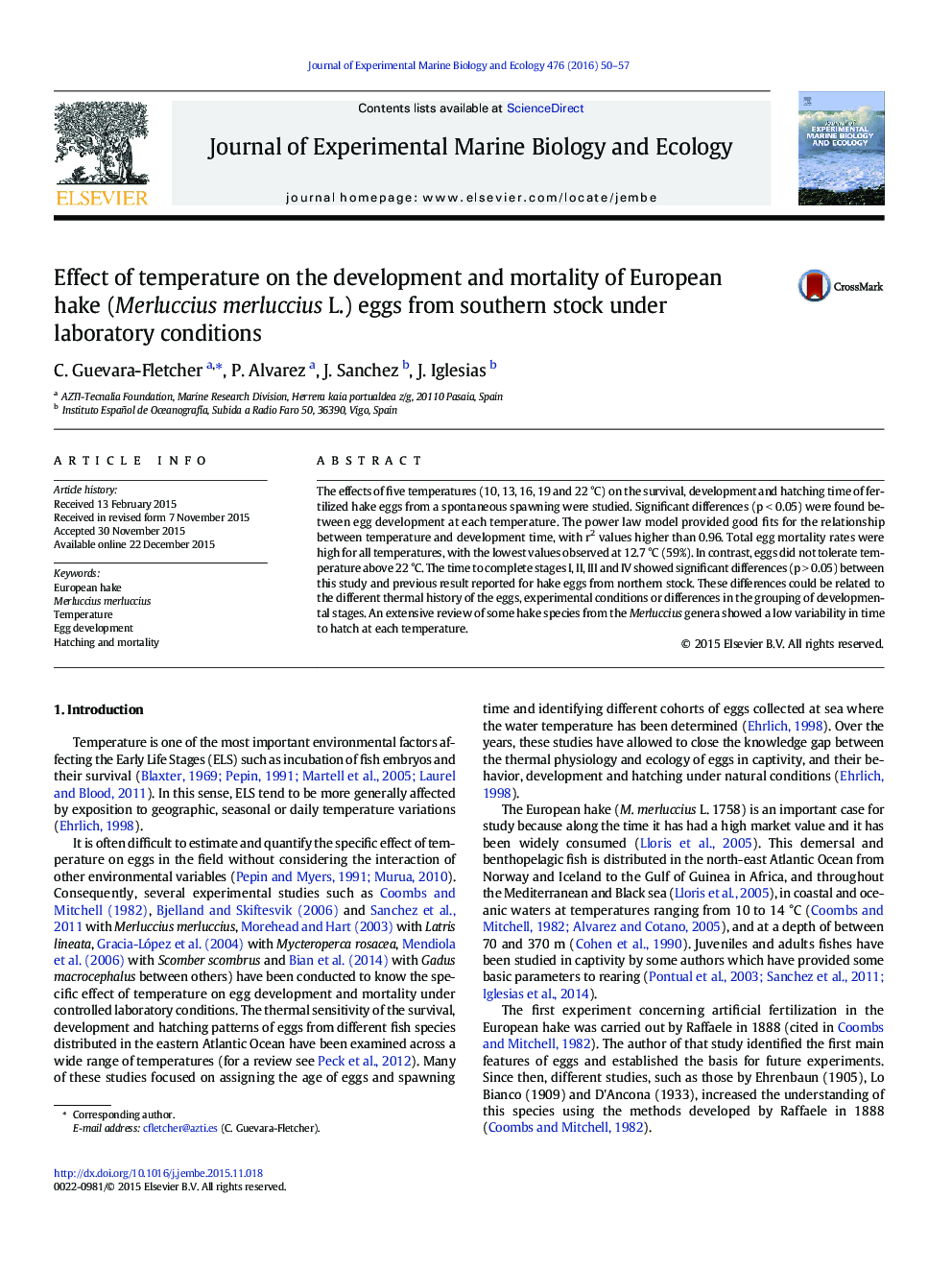| Article ID | Journal | Published Year | Pages | File Type |
|---|---|---|---|---|
| 4395344 | Journal of Experimental Marine Biology and Ecology | 2016 | 8 Pages |
•The effects of five temperatures on egg development and its hatching were different.•Optimal temperature of egg development ranged from 10.7–12.7 °C, while at 22 °C all egg were dead.•The model comparisons between this study and Coombs and Mitchell (1982) showed significant differences.•Mortality was high at all temperatures but less at 12.7 °C (59%).•This study illustrated the strong temperature-dependence of hake egg development and its mortality.
The effects of five temperatures (10, 13, 16, 19 and 22 °C) on the survival, development and hatching time of fertilized hake eggs from a spontaneous spawning were studied. Significant differences (p < 0.05) were found between egg development at each temperature. The power law model provided good fits for the relationship between temperature and development time, with r2 values higher than 0.96. Total egg mortality rates were high for all temperatures, with the lowest values observed at 12.7 °C (59%). In contrast, eggs did not tolerate temperature above 22 °C. The time to complete stages I, II, III and IV showed significant differences (p > 0.05) between this study and previous result reported for hake eggs from northern stock. These differences could be related to the different thermal history of the eggs, experimental conditions or differences in the grouping of developmental stages. An extensive review of some hake species from the Merluccius genera showed a low variability in time to hatch at each temperature.
